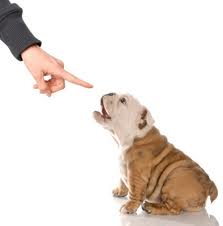How To Deal With Your Pet’s Behavioral Problems
 Many pets have behavioral problems in their everyday life. These may be petty annoyances of everyday life such as being jumped on, barked at, licked or scratched to something more serious like separation anxiety , or fearful behavior and inappropriate urination. Some of the behavioral problems merit attention because they could lead to inappropriate behavior that is serious and dangerous.
Many pets have behavioral problems in their everyday life. These may be petty annoyances of everyday life such as being jumped on, barked at, licked or scratched to something more serious like separation anxiety , or fearful behavior and inappropriate urination. Some of the behavioral problems merit attention because they could lead to inappropriate behavior that is serious and dangerous.
There are seven things that I would recommend doing with a pet to prevent, diagnose and/or treat a behavioral problem. As with everything else prevention is the best medicine. It is best to start as young as possible. A lot of the problems include house training and litter box use, dealing with inappropriate play and ensuing social harmony. It is best to train often to reinforce the good behaviors and gently and humanely. I do not recommend disciplining a puppy with negative reinforcement such as hitting with a newspaper or rubbing their nose in soiled area. These means of disciplining could lead to worse behaviors. Instead, I recommend positive reinforcement and praise especially if they have an acceptable behavior. This may include a treat or attention. Only use commands that you can enforce.
Sometimes diagnostic workups are in order to rule out disease or a primary behavioral problem. Your pets may be sick and painful leading it to be lethargic and irritable. These could lead to changes in its appetite or activity level. It is important that you the clients be educated about humane care as well as the science of learning. Positive reinforcement can shape behavior without putting you in danger.
There are several local trainers that can assist you in your training. I recommend that every pet have some form of obedience training. The trainers not only work with the petty annoyances, but also can assist with the serious behavioral problems. There are many ways to train your pets, so it is best to find a trainer to meet your needs. Not all pets need the corporal punishment part of training, so check several out. Ask questions.
There are some medications on the market that can be used. There are some that are not approved but can be used. As a veterinarian, we strictly monitor the pet’s reaction, because some are not approved for use. If we use them, we assume all responsibility. By no means do we want to make the pet worse on the medication.
It is important that safety is emphasized. Anytime we are dealing with an aggressive pet, there is a potential for injury. Prevention of future bites depend on the historic details of the individual animal’s behavior. We as veterinarians and owners need to take into account what the best interests are for both the owner and the pet. Unfortunately, owners liability must need to be addressed, especially with aggressive dogs. No one wants people or other animals hurt.
After the treatment plans have been implemented, it is important to have follow up visits with your veterinarian. Sometimes there are subtle effects to adjust. Every problem is unique, so constant adjusting may be needed.
